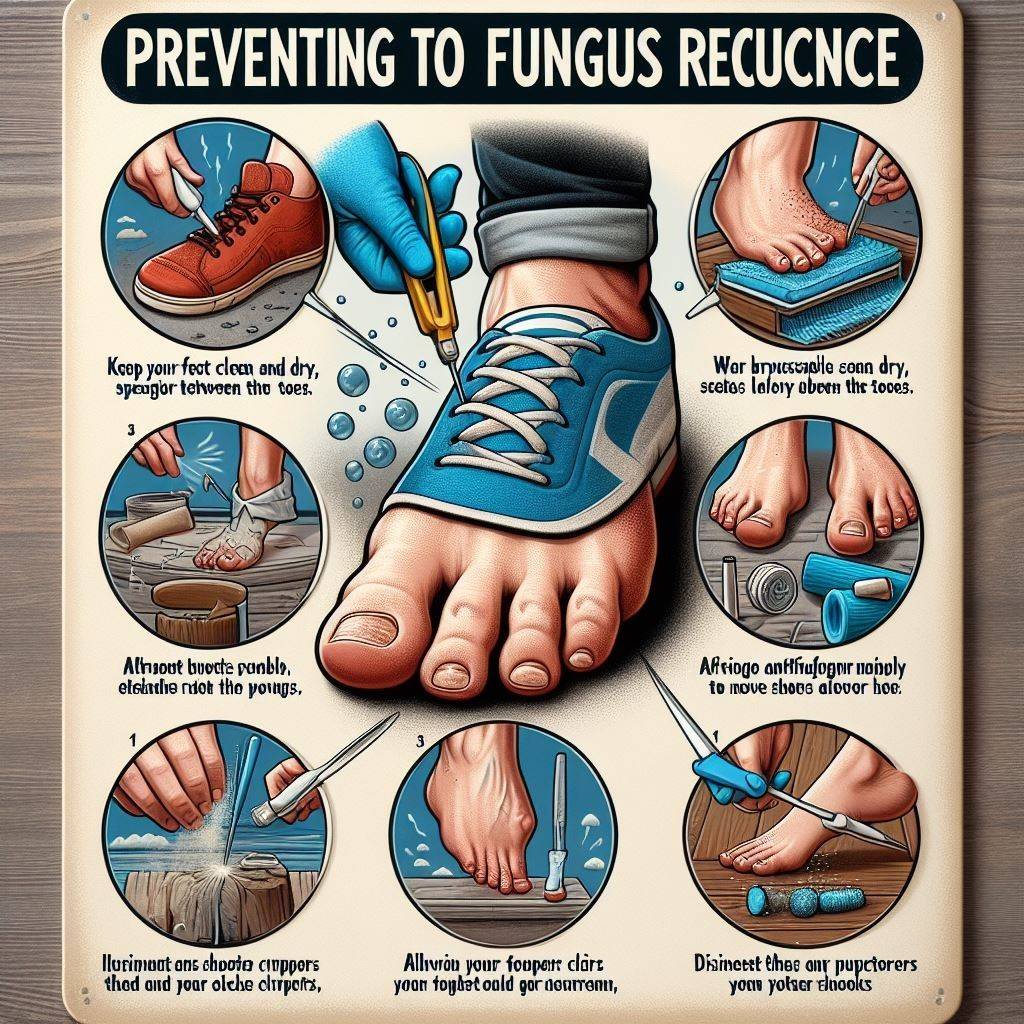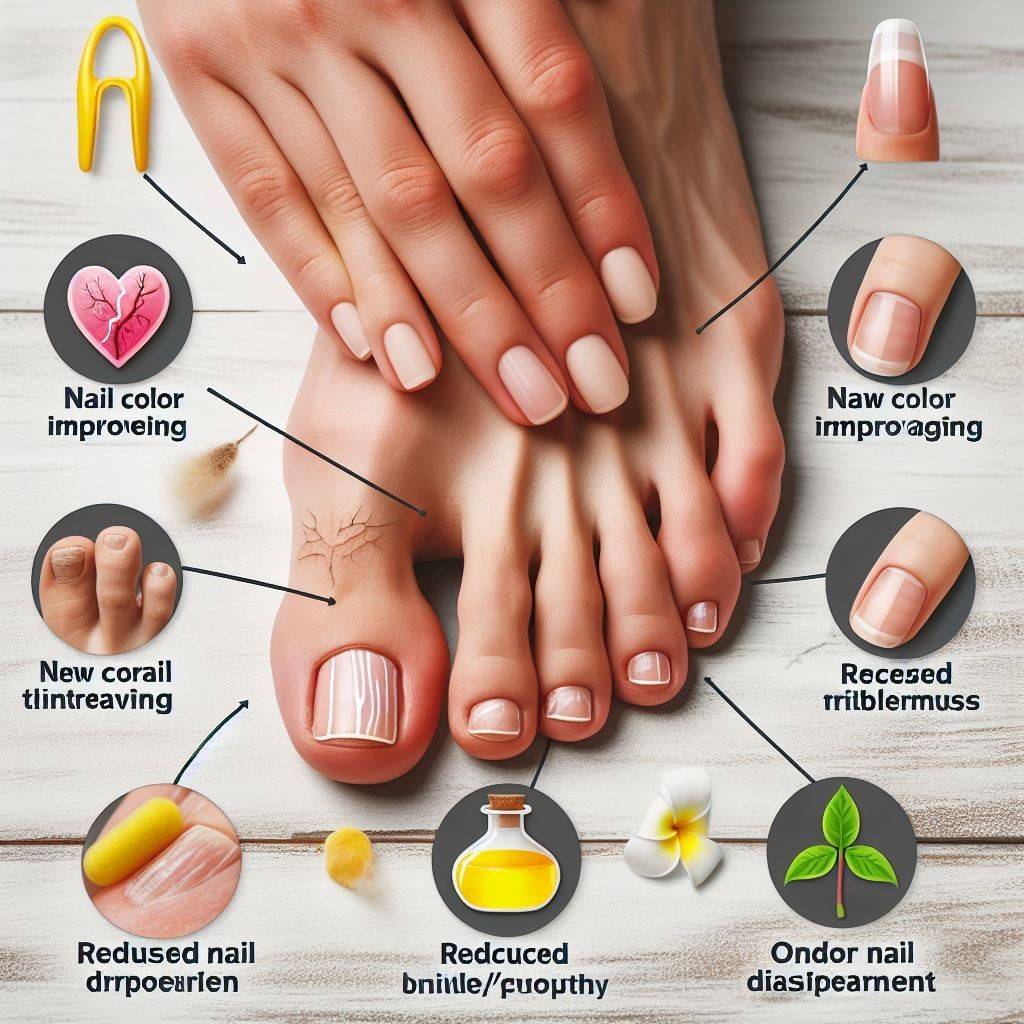How to Know If Toenail Fungus is Dying: 7 Signs It’s Working
Discover 7 signs confirming your treatment’s effectiveness. Learn how to know if toenail fungus is dying and track progress.
Introduction
Are you battling the unsightly and stubborn problem of toenail fungus? If so, you’re likely wondering how to know if toenail fungus is dying. While toenail fungus can be notoriously persistent, several telltale signs indicate your fungal foe is on its way out. In this comprehensive guide, we’ll explore seven key indicators that your toenail fungus is dying, so you can gauge your progress and stay motivated on the road to recovery.
How to know if toenail fungus is dying is a question that plagues many individuals dealing with this unsightly and often stubborn condition. Toenail fungus, also known as onychomycosis, is a common affliction caused by dermatophyte fungi that thrive in warm, moist environments like sweaty shoes or damp areas around pools and showers.
7 Signs for How to Know If Toenail Fungus is Dying

Discover 7 signs confirming your treatment’s effectiveness. Learn how to know if toenail fungus is dying and track progress. Treating toenail fungus can be a lengthy process, often requiring several months of consistent antifungal medication or home remedies. During this time, it’s essential to monitor your progress and watch for signs that the treatment is working, and the fungus is dying.
By understanding the seven signs that toenail fungus is dying, you can stay on top of your treatment journey and make informed decisions about your foot health.
Nail Color Improving
One of the most noticeable signs that toenail fungus is dying is a gradual improvement in the colour of the affected nail. Fungal infections often cause nails to take on a yellow, brown, or even black discoloration, as the fungi produce pigments and debris accumulates beneath the nail.
As the toenail fungus starts to die off, you may notice that the discoloured portion of the nail is becoming lighter or regaining its natural pinkish hue. This is an indication that the fungi are no longer producing pigments and the nail is starting to clear up.
However, it’s important to note that the discoloration may not disappear completely until the infected portion of the nail has grown out and been trimmed or filed away. Patience and consistency with your treatment are key during this stage.
Nail Thickness Decreasing
Another common symptom of toenail fungus is a thickening of the affected nail, making it appear crumbly, ridged, or even raised off the nail bed. This thickening occurs as the fungi cause the nail to produce excessive keratin, the protein that makes up nails.
As the toenail fungus dies, you may notice that the thickened, crumbly nail gradually becomes thinner and smoother. This is a positive sign that the nail is returning to its normal state and no longer producing excessive keratin.
Monitoring the thickness of the nail can be a helpful way to track your progress, but keep in mind that it may take several months for the thickened portion to fully grow out and be replaced by a healthy new nail.
New Nail Growth
One of the most exciting and visible signs that toenail fungus is dying is the appearance of new, healthy nail growth. As the fungal infection clears, the nail matrix (the area where new nail cells are produced) can start to create clear, uninfected nail material.
You’ll typically see this new growth starting at the base of the nail, near the cuticle. As the healthy nail grows out, it will gradually push the infected, discoloured portion of the nail toward the tip, until eventually replacing it entirely.
This process can take several months, as nails grow slowly (approximately 1-2 millimetres per month). However, watching that clear, healthy nail progress is a motivating milestone in your journey to beating toenail fungus.
Reduced Brittleness
Fungal infections can cause nails to become brittle, and prone to cracking, splitting, or crumbling. This is due to the fungi damaging the nail’s structure and disrupting its natural moisture balance.
As the toenail fungus dies, you may notice that the affected nail becomes less brittle and more pliable. It will be less likely to break or crumble and may even regain some of its natural flexibility and strength.
This is a sign that the nail is recovering from the damage caused by the fungi and returning to a healthier state.
Receding White/Yellow Streaks
Many cases of toenail fungus are characterized by white or yellow streaks running along the length of the nail. These streaks are caused by the fungi growing and spreading beneath the nail surface.
As the infection begins to clear, you may notice that these streaks start to recede or disappear altogether. This is a positive indication that the fungi are no longer actively growing and spreading within the nail.
However, it’s important to note that these streaks may not disappear completely until the infected portion of the nail has grown out and been trimmed or filed away.
Diminished Nail Distortion
In severe cases of toenail fungus, the nail may become distorted or misshapen, curling downward or lifting away from the nail bed. This distortion is caused by the excessive buildup of keratin and debris beneath the nail, as well as the damage caused by the fungi.
As the toenail fungus dies and the infection clears, you may notice that the nail gradually regains its natural shape and lies flat against the nail bed. This is a sign that the nail is recovering and returning to its normal, healthy state.
Odour Disappearance
Finally, one of the less visible but equally significant signs that toenail fungus is dying is the disappearance of any unpleasant odor associated with the infection.
Fungal infections can often produce a musty, foul smell due to the fungi’s waste products and the breakdown of nail material. As the fungi die off, this odour gradually dissipates, leaving your toes smelling fresh and clean.
If you notice that the unpleasant smell persists even after other signs of improvement, it may indicate that the infection is not fully cleared, and further treatment is required.
Monitoring Your Progress for How to Know If Toenail Fungus is Dying

Discover 7 signs confirming your treatment’s effectiveness. Learn how to know if toenail fungus is dying and track progress. Treating toenail fungus can be a lengthy process, often requiring several months of consistent antifungal medication or home remedies. During this time, it’s essential to monitor your progress and watch for signs that the treatment is working, and the fungus is dying. While these seven signs are positive indicators that your toenail fungus is dying, it’s important to remember that the treatment process can be slow and gradual. It may take several months or even longer to see a significant improvement, depending on the severity of your infection and the effectiveness of your chosen treatment method. To monitor your progress effectively, it’s helpful to take regular photos or keep a journal documenting the appearance of your nails. This will allow you to track changes more easily over time and ensure you’re on the right path.
If you’re not seeing any signs of improvement after several months of consistent treatment, it may be necessary to consult with a podiatrist or dermatologist to explore alternative treatment options or adjust your current approach.
Preventing Toenail Fungus Recurrence

Discover 7 signs confirming your treatment’s effectiveness. Learn how to know if toenail fungus is dying and track progress. Treating toenail fungus can be a lengthy process. While these signs indicate progress, remember it can take time. Prevent recurrence with good foot hygiene.
Here are some tips for preventing toenail fungus recurrence:
- Keep your feet clean and dry, especially between the toes.
- Wear breathable socks and shoes that allow air circulation.
- Alternate shoes daily to allow them to dry out completely.
- Use antifungal powders or sprays in your shoes and socks.
- Avoid going barefoot in public areas like pools, showers, or locker rooms.
- Trim your toenails regularly and keep them short.
- Disinfect nail clippers and other tools used on your feet.
- If you experience a recurrence, seek treatment promptly.
By staying vigilant and maintaining proper foot care habits, you can significantly reduce your risk of developing another toenail fungus infection in the future. Remember, prevention is key when it comes to this stubborn condition.
FAQS about How to Know If Toenail Fungus is Dying
How do you know if your toenail fungus is healing?
Several telltale signs indicate your toenail fungus is healing and, on its way, out. One of the most noticeable signs is an improvement in the appearance of the affected nail. As the fungus dies off, the discoloured, yellow, or brownish nail will gradually start to regain its natural pinkish hue. Additionally, you may notice that the thickened, crumbly nail becomes thinner and smoother, indicating no longer produces excessive keratin due to the fungal infection.
Another positive sign is the appearance of new, healthy nail growth at the base of the nail. As the infection clears, the nail matrix (the area where new nail cells are produced) can start to create clear, uninfected nail material. This healthy nail will slowly grow out, pushing the infected, discoloured portion toward the tip until it’s eventually replaced entirely.
You may also notice a reduction in nail brittleness, with the affected nail becoming less prone to cracking, splitting, or crumbling. Furthermore, any white or yellow streaks running along the length of the nail, which are caused by the fungi growing and spreading beneath the surface, will start to recede or disappear as the infection clears.
In severe cases, toenail fungus can cause nail distortion, such as curling downward or lifting away from the nail bed. As the fungus dies, you’ll notice the nail gradually regaining its natural shape and lying flat against the nail bed, a sign that it’s recovering and returning to its healthy state.
Finally, if your toenail fungus previously had an unpleasant, musty odour, you’ll likely notice this odor dissipating as the fungi die off.
What colour does nail fungus turn when it dies?
As toenail fungus starts to die off, the discoloured, yellow, or brownish nail will gradually become lighter in color, eventually regaining its natural pinkish hue. This is because the fungi are no longer producing pigments and debris beneath the nail.
However, it’s important to note that the discoloration may not disappear completely until the infected portion of the nail has grown out and been trimmed or filed away. The process of the healthy nail growing out and replacing the infected portion can take several months, as nails grow slowly.
Should I cut out the toenail fungus?
It’s generally not recommended to cut out or remove toenail fungus yourself, as this can lead to further damage and potentially worsen the infection. Toenail fungus is deeply rooted within the nail and cutting or trimming the infected portion may not fully eliminate the fungus.
Instead, it’s best to seek professional treatment from a podiatrist or dermatologist. They can provide appropriate antifungal medications, laser treatments, or other therapies to effectively kill the fungus from the inside out.
In some cases, a healthcare professional may recommend partial or complete removal of the infected nail as part of the treatment process, but this should only be done under their supervision and guidance.
What happens if you have toenail fungus for too long?
If left untreated for an extended period, toenail fungus can lead to several complications and potentially more severe issues.
Firstly, the fungal infection can spread to other toenails, as well as fingernails, making it more difficult to treat and potentially causing further disfigurement and discomfort.
Additionally, prolonged toenail fungus can cause the nail to thicken and crumble, making it more susceptible to breaking and potentially leading to ingrown nails or other painful conditions.
In severe cases, the fungus can spread beyond the nail and infect the surrounding skin, potentially leading to cellulitis (a bacterial skin infection) or other secondary infections.
People with weakened immune systems or underlying conditions like diabetes are at a higher risk of developing more serious complications from untreated toenail fungus, as the infection can potentially spread to other parts of the body.
Furthermore, toenail fungus can cause significant emotional distress and decreased self-confidence due to the unsightly appearance of the affected nails.
To avoid these potential complications, it’s important to seek prompt treatment for toenail fungus and follow through with the recommended course of action until the infection is fully cleared.
Conclusion
Discover how to know if toenail fungus is dying. Beating toenail fungus can be challenging, but recognizing signs of improvement is crucial. Watch for changes in colour, thickness, growth, brittleness, streaks, distortion, and odour. Patience and consistency are key; consult a professional if unsure about progress or treatment effectiveness.



